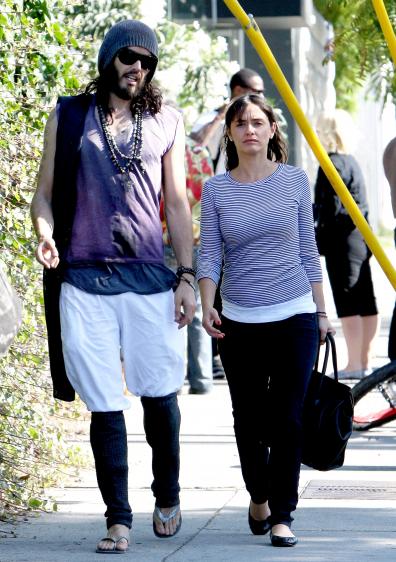Think of a giraffe lying on the Serengeti plain. He has just died, maybe of disease, maybe he was killed by a pride of lions, but now he's a 19-foot-long, 4,000-pound mound of meat, which very soon is going to stink and rot and muck up the neighborhood.
The lions that did it will eat roughly 35 pounds each. With five or six lions, that's a start, but there's a lot of giraffe left. Hyenas will help. Jackals will, too, but the bulk of the cleanup goes to the hero of my tale, nature's prize janitor ? hard-working, efficient, unbeloved, unadmired and now down on its luck. I am talking about the vulture. The vulture needs a little bit of love ...
... not only because these busy birds clean up giraffes (and hippos and gazelles and lions in Africa) weighing, by one estimate, about 12 million kilograms, or the weight of about 200,000 men ? but because they do it all over the world, gobbling up dead goats, cows, deer, rats at no charge, recycling that flesh back into other living things and then into the Earth.
They are built for this work. They will spot a corpse from high in the sky, swoop down, then cautiously approach, while tens, then hundreds of other vultures, seeing a gathering, will join in. If the meat is getting a little skanky, they don't care. The have a digestive system that can handle bacterial biotoxins. Rotten meat doesn't make them sick. And if they get covered in blood and body parts, that's a plus, because the odor keeps lions and other enemies away. What's more, because their diet probably makes them taste bad, says biologist Bernd Heinrich, "few animals eat them. Indeed, they use their partially digested food in projectile vomit as a defense." Ewwww.
Not only do they eat the dead ? they can play dead, too. If an enemy closes in, some vultures lie flat and get stiff, and since they're already covered with blood and rotten flesh, they make a convincing corpse. Plus (and here I'm just going all in), their babies are adorable, and I'm told they make good pets.
Professor Heinrich says a friend of his adopted (and was adopted by) a condor. This friend "traveled with it in his van and let it fly free on occasion to show off the bird's awesome size and beauty. The van was its cave, to which it returned and where it roosted contentedly as long as it was well fed on fresh meat."
Vultures have an ancient, noble lineage. Birds, after all, descend from dinosaurs, and some of our most popular dinosaurs were scavengers. T. Rexes, for example, weren't long-distance runners or agile hunters. "Their long, sharp teeth were adapted for ripping flesh," says Heinrich, making them, very possibly, one of our original "undertakers." Same goes for the flying pterosaurs with their 39-foot wing spans, who could swoop down onto giant brontosaurus corpses and, because of their size, keep their seat at the table. Heinrich calls them "supervultures."
 Dorling Kindersley/Getty Images
Dorling Kindersley/Getty Images Great-great-great-great-grandpa of vultures?
When the dinosaurs passed, huge scavenger birds like the giant teratorn replaced them. But lately, scavenger birds' diets have gotten skimpier. Woolly mammoths, giant sloths, saber tooth tigers, African gazelles, American bison ? those animals have either disappeared or have drastically diminished. It's like the Earth's kitchen has stopped serving vulture food.
Meanwhile, those animals still on the vulture menu ? goats, cattle, even deer ? are protected by humans and not allowed to spoil under the sky. Cattle farmers use every bit of the cows they slaughter, and even roadkill deer are carted off by highway departments and buried. "Vultures would do the job better if we let them," says Heinrich.
But the worst news is that vultures now have a drug problem. In Asia, where (in Hindu countries) cows are allowed to roam and die, where there are elephants, goats, monkeys and rats, vultures have held on, especially the white-rumped vulture. For centuries, the vulture was everywhere, living comfortably near human cities. Then, 20 years ago, very suddenly, it began to vanish. The collapse was so sudden, by the 1990s, biologists counted fewer than 10,000 individuals, mostly in Cambodia.
What happened? It turns out that an American drug developed to protect cattle had become popular in Asia. It's an anti-inflammatory medicine called diclofenac. When vultures descended onto a diclofenac-infused cow, many of them suffered kidney failure. So many vultures feast on a single cow that just one feed can poison hundreds and hundreds of birds.
Across Southeast Asia, teams of conservationists are now trying to wean farmers from diclofenac. They've come up with almost-as-cheap equivalents that don't poison vultures. A German pharmaceutical firm, Boehringer Ingelheim, that invented one substitute released its patent so that it can be manufactured cheaply. In several countries, officials have opened what are called "vulture restaurants." They put diclofenac-free goat corpses under the sky and invite local vultures to dine safely. It's too early to say if the campaign is working, but just in case, Indian and Pakistani scientists have learned to breed drug-free baby vultures for future release into the wild.
In North America, our vultures are luckier. Because of global warming, some of them have moved farther north into Canada, where there are herds of caribou that die in the open and increasingly remain unfrozen. There are fewer people up there, so animals aren't removed or buried. The turkey vulture, once a strictly Southern bird, says Bernd Heinrich, now breeds in Canada. "For decades I never saw a turkey vulture," he writes in his new book Life Everlasting, "but now I see them regularly every summer in Vermont and Maine." So vultures have a niche in the North.
But they're still getting clobbered in the South. Chemical companies are coming to market with ever newer rat poisons ? Havoc, Talon, Ratimus, Maki, Contrac, and d-Con's cleverly named Mouse Prufe II ? and these poisons can infect animals that feed on rats, which include not only vultures but also barn owls, ravens and sometimes crows. Flying predators love the occasional rat snack, but we humans think we can conquer the rats on our own, running the show by and for ourselves.
We should be more humble, says Bernd Heinrich. In the long run, it makes sense to protect animals that do the grunt work of the world. They do it well, they do it for free, and if we keep them around, we don't have to do it ourselves.
Vultures may not be the prettiest animals, they may, on occasion, smell like death, but if we let them slip away, if we try to manage the world all by ourselves, we will end up, increasingly, by ourselves. Alone can get expensive. Alone is riskier. But most of all, alone is lonelier.
Bernd Heinrich's new book is Life Everlasting: The Animal Way of Death (Houghton Mifflin Harcourt, 2012), and if you've never read Heinrich, then you've missed out on a poet/scientist who can go for a walk and come home with more wonderful stories than Hans Christian Anderson, and unlike Hans, Bernd's are all true. You can go into your backyard, into the woods, pick up a rock, roll over a log, poke into a tree hole and see what Heinrich sees. Can't do that with Mr. Anderson. Mermaids are really hard to find, while beetles, wasps, ravens, vultures and bees are doing remarkable things ? right outside your door.
If you want to see vulture rescue teams at work in India, Pakistan, Cambodia and Nepal, this video from the Royal Society for the Protection of Birds tells the story well. That's where we got our pictures.
Source: http://www.npr.org/blogs/krulwich/2012/07/03/156125689/showing-vultures-a-little-love?ft=1&f=1007
knicks vs heat ash wednesday kate walsh cnn debate equatorial guinea marine helicopter crash chicago weather






